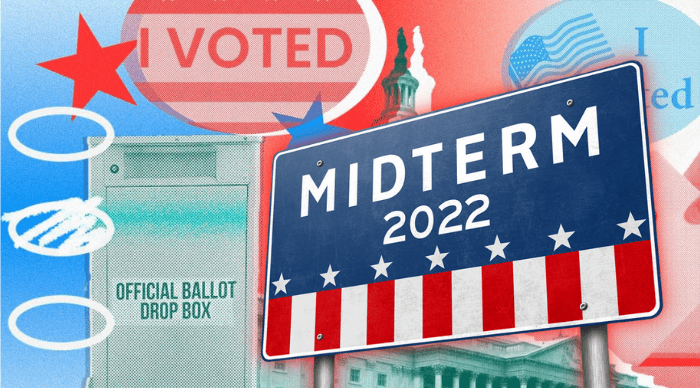Election day has arrived. With polls starting in a few hours across the country, you can find guidance on what to expect for each state on the 2022 Election Expectations hub.
It’s not a presidential year, but these are high-stakes elections nonetheless. There are several things to consider today, including the following questions: Will the expected red wave be a ripple or a tsunami? What effect will the Supreme Court decision striking down Roe v. Wade have? And what will we know before we go to bed tonight?
An election is a complex thing — even more so when multiplied by 50 states, as the U.S. voting system is.
Heading into Tuesday, nearly 44.5 million people across the country had already cast ballots.
Laws for mail-in voting are so specific that even rules for who can drop off a ballot for you are codified. It’s different from state to state.
Ballots that are damaged get scrutinized and fixed — if they can be. Remember Florida’s “hanging chads” in the 2000 presidential election? Every state has methods for making sure every vote that can be counted is counted.
All 435 U.S. House of Representatives seats is up for grabs, as are 35 U.S. Senate seats and 36 governorships.
Republicans would need to pick up five seats to take a majority in the House and just one to control the Senate. Nonpartisan election forecasters and opinion polls suggest Republicans have a solid chance of winning a House majority. This result could become clear Tuesday evening, with control of the Senate likely to be closely fought and likely to take longer to be resolved.
A massive wave of Republican support could lead to declarations of victory hours after polls close.
Trump and his allies succeeded in sowing broad distrust about how votes are cast and counted by promoting false claims of widespread fraud. The effort has eroded public confidence in elections and democracy, led to restrictions on mail voting and new ID requirements in some GOP-led states, and prompted death threats against elected officials.
This year, Election Day is marked by concerns about further harassment and the potential for disruptions at polling places and election offices where ballots will be tallied. Election officials say they are prepared to handle any issues, urging voters not to be deterred.
Election officials acknowledge electronic voting systems can be vulnerable and have taken numerous steps to increase security since the 2016 election, when it was determined that Russia looked for vulnerabilities. Congress has sent nearly $900 million to states to boost their cybersecurity defenses, including hiring more IT staffers, replacing outdated systems, and adding regular security testing.
Most voters also cast hand-marked paper ballots or use machines that produce a paper record of their votes. These are used after the election to check that device used to count ballots work properly.
When will people know the U.S. midterm results?
As Reuters Media posted on their website about the U.S midterm elections, people should be ready for a long night and maybe days of waiting before it’s clear whether Republicans or President Joe Biden’s Democrats will control Congress.
All 435 U.S. House of Representatives seats is up for grabs, as are 35 U.S. Senate seats and 36 governorships.
Republicans would need to pick up five seats to take a majority in the House and just one to control the Senate. Nonpartisan election forecasters and opinion polls suggest Republicans have a solid chance of winning a House majority. This result could become clear Tuesday evening, with control of the Senate likely to be closely fought and likely to take longer to be resolved.


